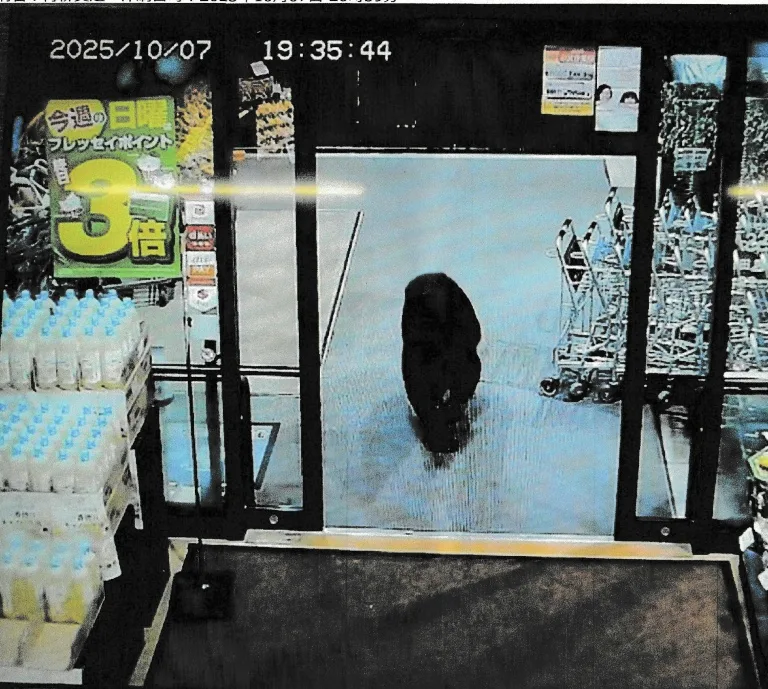
Japan is facing an unprecedented rise in fatal bear attacks, with seven deaths reported so far this year — the highest number since official recordkeeping began in 2006, according to Japan’s Ministry of the Environment. Experts warn that climate change, food scarcity, and depopulation in rural areas are driving wild bears closer to human settlements, increasing the risk of deadly encounters.
Record Number of Deaths Linked to Bear Encounters
A ministry official, speaking on condition of anonymity, confirmed that the seven fatalities surpass the previous record of five deaths in the 2023–2024 fiscal year.
“This is the largest toll since 2006 when statistics started,” the official said.
The grim milestone follows the discovery of a man killed by a bear last week in Iwate Prefecture, a mountainous region in northern Japan. In total, at least 108 people have been injured by bears since April, marking a sharp increase from 85 incidents in the previous year.
Bears Venturing Into Cities and Stores
The threat of bear encounters is no longer confined to Japan’s wilderness.
Last week, a 1.4-meter (4.5-foot) Asian black bear entered a supermarket in Numata, a town in Gunma Prefecture, north of Tokyo. The bear injured two men — one in his 70s and another in his 60s — before authorities managed to contain the situation.
“It entered from the main entrance and stayed inside for roughly four minutes,” said Hiroshi Horikawa, a management planning official at the grocery store chain.
“It almost climbed onto the fish display and shattered glass. In the fruit section, it knocked over piles of avocados and stamped on them.”
At the time, about 30 to 40 shoppers were inside the store. Witnesses described a scene of panic as the bear, unable to find an exit, became increasingly agitated before eventually escaping toward the nearby mountains.
Increasingly Bold Behavior from Bears
On the same day as the supermarket incident, a farmer in Iwate was attacked by a bear accompanied by a cub just outside his home. Earlier this month, a Spanish tourist waiting for a bus in the UNESCO World Heritage village of Shirakawa-go, central Japan, was also injured after a surprise bear encounter.
These incidents are part of a disturbing trend showing bears venturing farther into populated areas in search of food. Experts attribute this behavioral change to multiple factors — from the decline in rural human activity to reduced natural food sources caused by erratic weather patterns.
How Climate Change and Depopulation Are Fueling Bear Encounters
Environmental specialists say that climate change is disrupting the ecosystem that Japan’s bears depend on. Warmer winters have shortened hibernation periods, while changes in seasonal rainfall have reduced acorn and nut harvests, a key part of the bears’ autumn diet.
Meanwhile, Japan’s rural depopulation is leaving once-farmed lands abandoned and overgrown, creating natural corridors for wildlife to approach urban edges undisturbed.
“Empty villages and aging populations mean fewer deterrents — no hunters, fewer lights, and less noise,” said wildlife ecologist Dr. Masaki Takahashi of Hokkaido University. “Bears are simply reclaiming territory humans once occupied.”
Japan’s Dual Bear Species and Government Response
Japan is home to two bear species:
- The Asian black bear (Ursus thibetanus japonicus), also known as the moon bear, found across Honshu and Shikoku islands.
- The brown bear (Ursus arctos yesoensis), native to Hokkaido, Japan’s northernmost island, and significantly larger and more aggressive.
Thousands of bears are culled or captured annually, but wildlife experts warn that hunting alone cannot address the underlying environmental imbalances driving the animals into human areas.
The Environment Ministry has urged local authorities to strengthen early warning systems, improve waste management, and educate residents on how to respond to bear sightings. Some prefectures have even begun deploying AI-powered camera networks to detect and alert communities of approaching wildlife.
A Rising Public Safety Concern
The Japanese government is now facing mounting pressure to act decisively. With bear encounters reported from Hokkaido to central Honshu, and even on the outskirts of major cities like Sendai and Niigata, the issue is no longer regional — it’s national.
Public anxiety has grown following viral videos of bears roaming residential streets, agricultural fields, and now supermarkets. Citizens are calling for stronger wildlife management policies and improved emergency response systems to prevent further tragedies.
“It’s no longer just about conservation — it’s about coexistence and safety,” said Takahashi. “We must adapt faster than the bears are.”
Looking Ahead
As autumn deepens, authorities warn that more bear encounters could occur. With food shortages in the wild and early snowfall predictions for northern Japan, bears are expected to remain active longer before entering hibernation.
Wildlife experts emphasize that the only long-term solution lies in balancing human development with ecological restoration — ensuring that Japan’s mountain habitats remain healthy enough to sustain their native bear populations without forcing them into urban spaces.
Leave a Reply